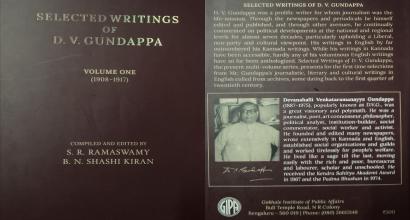In the 2015 Crime/Mystery Thriller Detective Byomkesh Bakshy!, after retrieving a corpse from an abandoned factory, Byomkesh says, “Sach ke aas-paas waala jhoot pakadna mushkil hota hai” (It’s difficult to detect a lie that is close to the truth.) At its very core, the work of a detective is to eliminate falsehood and find the truth. This is perhaps the reason why Saradindu Bandhopadhyay doesn’t call his hero a ‘detective.’ In the original stories, Byomkesh calls himself a satyanveshi – a discoverer of truth.
The pursuit of a philosopher is similar. A search for truth. An elimination of the superfluous. While a detective tries to uncover transient, temporal truths, a philosopher tries to reveal lasting, ultimate truths. The realm of operation might vary but the objective is the same, the modus operandi is the same, and the feverish energy required is the same.
They both know how easy it is to be fooled. They both know how hard it is to get firsthand evidence. They both know that their journeys will be unpredictable and often expect the unexpected.
To be successful in this quest of truth, both the detective and the philosopher need the same toolkit. Here are three essential tools from the kit:
1. Observation
Deduction begins with observation. A detective is always on the lookout for data. He poses questions to everyone – from the watchman to the doctor to the taxi driver – not with the arrogance of one who is interrogating but with the humility of one who wants to know. He makes careful notes of everything that he hears and sees. He doesn’t start judging yet. Just observing, absorbing.
A philosopher is also on the lookout for information. She reads through various texts and meets with several experts. She constantly observes, assimilates. Useful information may come from any source. She doesn’t rush towards formulating a theory.
In the Rigveda Samhita (10.158.4) there is a beautiful prayer to the sun: “O Surya, grant sight to our eyes! Give sight to our being so that we may truly see! Let us see this world as a whole. Let us see it in detail.”
Both the philosopher and the detective pay attention to details while maintaining the ability to see the larger picture when needed.
2. Negation
Assiduous collection of data is an inevitable first step. But much of this data will be useless. The philosopher knows this. After poring through volumes and picking many brains, she eventually finds that the truth is so, so simple.
This process of negation, to cut out all the noise and strip the case to its essential features, is critical for the detective. In The Sign of the Four (1890), Holmes tells Watson, “Once you eliminate the impossible, whatever remains, no matter how improbable, must be the truth.”
Adi Shankara says pretty much the same thing in the Nirvana Shatkam. In a quest to know the true nature of the self, he says, “I am not the elements nor the body nor the senses nor the mind. I am not emotions nor relationships nor rituals nor ethics. I am not free nor am I bound.” And what remains in this case, however counterintuitive it might seem to some, is: “I am consciousness. I am bliss. I am purity.”
This kind of negation becomes next to impossible for the detective if he is attached to someone or something in the process. And if such an attachment is there, it becomes an obstacle. Through the course of the detection, he spots it and eliminates it to reach the heart of the mystery.
The philosopher who is attached to an ideology or a dogma is also constrained. She knows that she has to break free from those shackles in order to find the truth.
3. Imagination
In the Rigveda and other Vedic texts, the word kavi is used to denote both a seer and a poet. It isn’t surprising that the earliest thinkers of the human race were poets.
A philosopher has to be a poet and so does a detective. In fact, even the ideal villain is a bit of poet. In The Purloined Letter (1844), speaking of the evil minister D—, Dupin says, “As poet and mathematician, he would reason well; as mere mathematician, he could not have reasoned at all.”
This basically emphasizes the need for imagination. If a detective cannot get into the mind of the bad guys, he cannot possibly figure out their scheme and catch them. A philosopher should have the empathy to look at a text through the eyes of the creator of a concept, failing which she will not be able to capture the evolution of thought.
Imagination is powerful not just because it helps in looking at things from a different perspective, but also because it cultivates compassion, which is necessary while resolving the case.
The intense reasoning and calculation lead to the chasing and apprehending of the criminal. This thrilling process indeed motivates the detective. But after he has caught the thief, what is left? He might develop a kind of compassion, even respect, for his opponent. Just as he understands how the bad guy planned the whole thing, he also understands the driving force behind his evil, which probably had its roots in abuse or poverty or something beyond the mere persona of the villain. The detective hands him over to the police but retains the human connection.
A philosopher is also compassionate towards the earlier masters she has countered and challenged. Even though her new theory might be better than the older ones, she knows their value and importance. She always acknowledges her debt to them.
The X-Files might have brought fame to the ‘truth is out there’ idea but the rishis of ancient India and Byomkesh Bakshi would agree with Hercule Poirot when he says, “One must seek the truth within – not without.”
This article was first published in Daily O as part of my column Commonsense Karma.








































